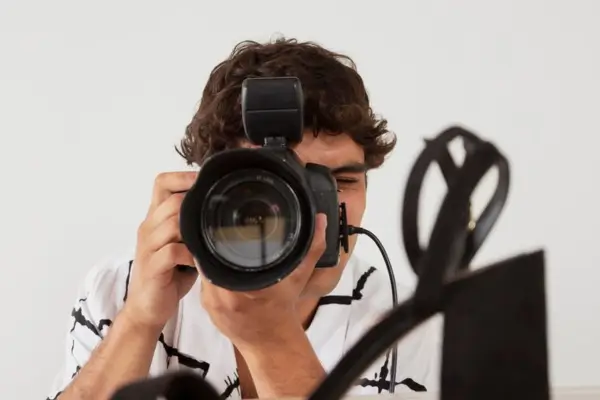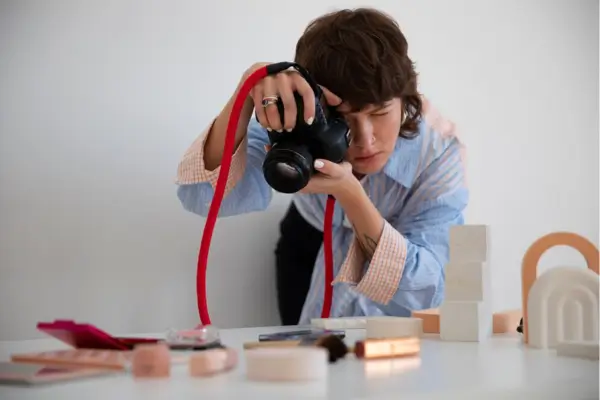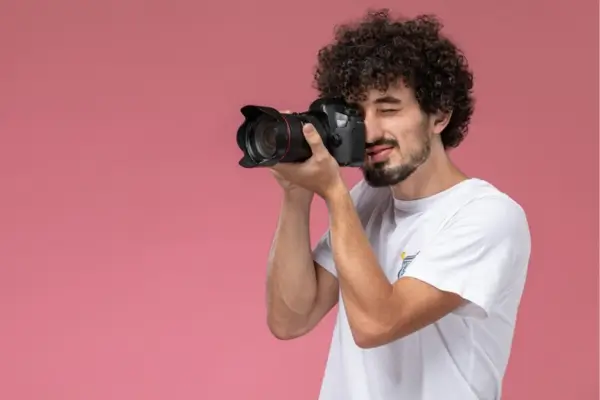As a photographer, staying inspired can often feel like an uphill battle. With deadlines, client expectations, and the constant pressure to create fresh content, it’s easy to fall into a creative rut. Whether you’re an amateur or a seasoned professional, there are times when the spark just isn’t there. We all experience it – that feeling of staring at your camera, waiting for inspiration to strike, but it simply doesn’t.
Maintaining inspiration is crucial not only to ensure you keep producing high-quality work but also to protect your passion for photography. When inspiration wanes and burnout sets in, it can negatively affect your creativity, productivity, and overall well-being. According to a survey by Freelance Photography Magazine, over 60% of photographers admit to experiencing burnout at some point in their careers, leading to decreased motivation and creative output.
So how can you stay inspired and avoid the dreaded creative burnout? In this article, we’ll explore some practical tips and strategies to help you reignite your passion and keep your photography fresh and exciting.
Understanding Creative Burnout in Photography
Creative burnout is a state of mental and emotional exhaustion that affects many photographers at some point in their careers. It occurs when the constant demands of creating, producing, and delivering work lead to a sense of depletion, where you feel uninspired, overwhelmed, or detached from the passion you once had for your craft. For photographers, burnout often manifests as a lack of motivation to shoot, difficulty coming up with new ideas, or a general disinterest in photography altogether.
Symptoms of Creative Burnout in Photography:
- Lack of Motivation: You no longer feel excited to pick up your camera or plan photo sessions. Even the thought of going out to shoot feels like a chore.
- Creative Block: You struggle to come up with new ideas for shoots, compositions, or editing techniques. Your usual creative spark seems to be missing.
- Frustration and Self-Doubt: You might feel frustrated by your work, constantly questioning whether it’s good enough or whether you’re losing your skill.
- Fatigue and Stress: Photography, especially as a career, can become physically and mentally draining. Burnout can lead to feeling constantly tired or stressed, both on shoots and during editing sessions.
Common Causes of Creative Burnout:
- Repetitive Work: Doing the same type of photography day in and day out can lead to monotony. Whether it’s shooting the same subject, style, or location, repetition can stifle creativity and make your work feel predictable.
- Lack of New Challenges: If you’re not pushing your boundaries or exploring new techniques, your photography can start to feel stagnant. Without fresh challenges, it’s easy to lose motivation and inspiration.
- Overworking: The pressure to deliver constantly, whether it’s for clients, personal goals, or social media, can quickly lead to burnout. Long hours spent on editing, managing your business, or attending shoots can leave you feeling drained and uninspired.
How Burnout Can Negatively Affect Both Your Passion and Your Career: Creative burnout isn’t just an emotional drain—it can have serious implications for your career. When burnout strikes, your ability to produce high-quality work diminishes, which can affect your reputation as a photographer. Clients may notice the lack of enthusiasm or innovation in your work, which could lead to a drop in opportunities or income. Moreover, burnout can damage the passion you once had for photography, causing you to reconsider your path or even quit altogether.
It’s essential to recognize the signs of burnout early so that you can take steps to prevent it. By understanding its causes and symptoms, you can find effective ways to reignite your creativity and sustain your passion for photography in the long term.

Embrace Change and Experiment with New Techniques
One of the best ways to reignite your inspiration as a photographer is by embracing change and stepping out of your comfort zone. Experimenting with new photography styles, techniques, or gear can help you break free from routine and rediscover the joy of capturing images. When we get stuck in the same patterns, it’s easy for creativity to plateau, and we start feeling uninspired. However, trying something new can provide the spark needed to reignite that passion.
Exploring New Photography Styles and Techniques
To start, consider exploring different photography styles that you may not have delved into before. For example, minimalism is a trend that focuses on simplicity, often using a limited color palette and clean compositions. This style challenges you to think carefully about the elements you include in your frame, forcing you to simplify and focus on the essence of the subject.
Another exciting direction is macro photography. Capturing the intricate details of everyday objects or nature from a close-up perspective can reveal stunning textures and patterns that are often overlooked. It’s a whole new world within photography that can reignite your sense of wonder and curiosity.
If you haven’t already, you might want to experiment with film photography. While digital photography has its advantages, film can offer a unique tactile experience and a timeless aesthetic. The limited number of exposures on a roll of film makes you more intentional with each shot, and the unpredictability of developing the images can be thrilling.
Experimenting with New Gear
In addition to exploring new styles, don’t underestimate the power of experimenting with different gear. Trying out a new lens or camera can make a world of difference. For example, you could explore wide-angle lenses for dramatic landscape shots or prime lenses for stunning portraits with beautiful bokeh. Alternatively, experimenting with vintage or alternative cameras, such as Polaroid or holga, can give you a different creative challenge and produce a nostalgic, unpredictable result.
Stepping Out of Your Comfort Zone
Sometimes, it’s not just about changing the style or equipment, but also about changing your perspective. Stepping out of your usual environment can offer new subject matter and lighting conditions to explore. You might want to travel to unfamiliar places, whether it’s a local park you’ve never visited or a foreign country with new landscapes, architecture, or cultural scenes.
Even if you’re staying close to home, seek out new lighting conditions or work at different times of day. Photographing in golden hour light or experimenting with night photography can produce beautiful, unexpected results that revive your passion.
Ultimately, embracing change and experimenting with new techniques allows you to break free from the constraints of routine. Whether it’s by adopting a fresh style, using new gear, or exploring unknown territory, pushing yourself creatively will reignite your inspiration and ensure that burnout stays at bay. So, the next time you feel stuck, try something new—whether it’s as simple as changing your perspective or diving into a completely unfamiliar technique. You never know, it might just lead to your next great photographic discovery.
Take Breaks and Disconnect
As a photographer, it’s easy to fall into the trap of always being “on,” whether it’s capturing images, editing, or brainstorming your next big project. However, continuous work without rest can lead to mental fatigue and creative burnout. Just like any other creative profession, taking breaks and stepping away from photography for a while is crucial to preserving your passion and creativity.
The Importance of Rest
Rest isn’t just about giving your body a break; it’s also about giving your mind the space it needs to recharge. When you’re constantly engaged in photography, your brain can become overstimulated, leading to a lack of fresh ideas and inspiration. A well-timed break allows you to step back, gain perspective, and come back to your craft with renewed energy.
How Breaks Help Recharge Creatively
Creativity thrives in moments of rest. When you’re away from the camera, your brain processes everything you’ve experienced and learned, often in ways you might not consciously realize. These moments of reflection and distance give your mind the opportunity to make new connections and come up with fresh ideas for your next shoot. Simply put, stepping away from the lens can give you the mental reset needed to approach your photography with a fresh perspective.
Suggestions for Activities to Recharge
- Travel and Explore New Places: Traveling offers endless opportunities for inspiration. Even if it’s just a weekend getaway or a visit to a nearby town, seeing new landscapes, cultures, and people can spark creativity in unexpected ways. The beauty of travel is that it helps you experience different lighting, environments, and perspectives that you can later apply to your photography.
- Pursue Hobbies Outside of Photography: Sometimes, engaging in activities unrelated to photography can be just as beneficial. Whether it’s painting, hiking, reading, or learning a new instrument, these hobbies help you unwind and recharge. The key is to engage in something that feels entirely different from your usual routine, which can refresh your mind and allow new ideas to flow.
- Simply Rest: It’s also okay to just take some time off and do nothing. Resting can be one of the most effective ways to prevent burnout. Take a day or two to relax, enjoy some time with family or friends, or even indulge in a good book or a movie. You might find that the best ideas often come when you’re not actively trying to be creative.
In the fast-paced world of photography, it’s important to remember that your creativity needs time to grow. Taking breaks and disconnecting from photography isn’t a sign of weakness—it’s a way to honor your craft and ensure you remain inspired for years to come.

Set Creative Challenges and Personal Projects
One of the most effective ways to stay inspired and avoid creative burnout as a photographer is by setting personal challenges and working on projects that ignite your passion. These projects allow you to explore new ideas, test different techniques, and push your creative boundaries. When you focus on personal projects, there’s no pressure to meet a client’s expectations, which provides the freedom to experiment and rediscover the joy of photography.
Examples of Creative Challenges
- 365-Day Project: This is a popular challenge where you take one photo every day for an entire year. It encourages consistency, sparks creativity, and pushes you to look for inspiration in everyday life. Whether it’s a portrait, landscape, or abstract shot, the challenge helps you build a routine and develop a diverse portfolio over time.
- Theme-Based Shoots: Choose a theme that excites you—whether it’s color-focused, seasonal, or emotion-driven. For instance, you could explore “Textures of the City” or create a series capturing the changing light of a specific place throughout the day. Theme-based projects give you a clear creative direction and often inspire you to look at familiar subjects from new angles.
- Exploring New Locations: Traveling or simply exploring unknown places near you can provide endless inspiration. By seeking out new environments, you challenge yourself to adapt to different lighting conditions, landscapes, and cultural contexts. This can lead to fresh ideas and perspectives that reignite your creative energy.
The Benefits of Personal Projects
Personal projects are incredibly valuable for long-term creative growth. They not only keep you inspired but also allow you to:
- Refine Your Skills: By focusing on specific techniques or genres, you can hone your skills in a more concentrated way, whether it’s mastering low-light photography or perfecting portraiture.
- Build a Unique Portfolio: These projects often lead to one-of-a-kind work that sets you apart from others. Clients are often drawn to photographers with a distinctive personal style, and these projects can help you develop that uniqueness.
- Rediscover Your Passion: When you’re no longer working under the pressure of deadlines or client demands, you can rekindle your love for photography. These personal challenges remind you why you started in the first place, often bringing back the excitement and enthusiasm you had when you first picked up a camera.
- Explore New Ideas Without Limits: Personal projects give you the space to experiment with ideas that might not fit within client work. This can lead to surprising creative breakthroughs, whether you’re trying out new editing techniques or exploring unconventional compositions.
Incorporating personal projects into your routine not only helps maintain your creative energy but also keeps your photography journey fresh and exciting. So, challenge yourself, explore new ideas, and embrace the process of growth. Your camera is your tool to continuously reinvent your vision!
Connect with Other Photographers and Build a Community
One of the most powerful ways to stay inspired and avoid creative burnout is by connecting with fellow photographers. The photography world can sometimes feel solitary, especially when you’re struggling with a lack of ideas or motivation. However, engaging with other creatives, both online and offline, can open up new perspectives and inspire fresh ideas.
Networking with other photographers not only helps you stay up to date with trends and techniques but also encourages a sense of camaraderie. By exchanging experiences and advice, you can learn new methods, find solutions to creative blocks, and get feedback on your own work. Collaboration often sparks innovation, and seeing the unique approaches of others can reignite your passion for photography.
Photography communities, whether on social media platforms, forums, or photography-specific groups, provide spaces where photographers can share their work, ask for feedback, and connect over mutual interests. These communities offer endless inspiration, allowing you to see the work of others and feel motivated to explore new ideas and techniques. Moreover, the sense of belonging to a group with similar interests can lift you out of isolation, making the creative process more enjoyable.
Participating in photography events, workshops, or local meetups is another excellent way to stay engaged. These gatherings offer opportunities for hands-on learning and skill-building while providing a platform for you to network with like-minded individuals. Whether it’s a local photography exhibition, a themed shoot, or a workshop hosted by a professional photographer, these events create an environment where you can push your creative boundaries and spark new ideas.
Additionally, workshops and meetups often bring together a diverse group of people, each with their unique perspective and style. By working alongside others, you can experiment with different techniques, learn from experts, and share your own knowledge. Being part of a photography community can remind you why you fell in love with photography in the first place and fuel your creativity in ways you might not have expected.
In summary, building a strong network within the photography community—whether online or in person—can serve as a constant source of inspiration. It encourages personal growth, creative exploration, and motivation, all of which are essential to avoiding burnout and keeping your passion for photography alive.
Seek Inspiration from Other Art Forms
As a photographer, it’s easy to fall into a routine where everything you create starts to feel similar. Whether it’s shooting the same type of subject or using similar editing techniques, this repetition can lead to creative burnout. One powerful way to break free from this monotony is by seeking inspiration from other art forms, such as painting, music, or literature. Drawing from diverse creative disciplines can open up new ways of thinking and help fuel your photography with fresh ideas.
How Cross-Disciplinary Inspiration Can Help You Break Creative Blocks
Inspiration from other forms of art encourages you to view the world through different lenses. For example, when studying a painting, you might notice the way light and shadow interact in a way you hadn’t considered before. Music, with its rhythm and mood, might influence the pacing and flow of your photo series. Literature can evoke emotions or stories that push you to explore new themes or narratives in your work.
When you’re feeling stuck, pulling ideas from outside of photography can be a game-changer. It breaks the cycle of predictability, allowing you to explore new ways of visual storytelling. For instance, a novel might inspire a portrait series based on its characters, while a piece of music could guide the mood and composition of your shots. These cross-disciplinary influences can breathe new life into your creative process and help you break through mental blocks.
Practical Tips for Integrating Elements from Other Art Forms into Your Photos
- Study Visual Art
Explore paintings, sculptures, or digital art to see how artists use color, light, composition, and space. Take inspiration from their techniques and try to apply them to your own photography. For example, the use of contrasting colors in a painting can influence how you compose your shot, or the way a painter captures movement might inspire you to experiment with motion in your photos. - Listen to Music While Shooting
Music can dramatically influence your mood and creativity. Create playlists that reflect different emotions or themes, and listen to them while photographing. The rhythm of a song might guide the pacing of your shots, while the lyrics could inspire the story you want to tell through your images. Try shooting in silence first, then listen to a piece of music and see how it influences your perspective. - Read and Draw from Literature
Literature can offer rich narratives, themes, and emotional depths to inspire your photography. Reading novels, poetry, or short stories can give you ideas for photo series based on characters, settings, or themes. For instance, you could create a series of conceptual portraits inspired by a character in a book, or develop an editorial shoot that visually tells a story akin to a narrative in a novel. - Explore Film and Cinematic Styles
Movies and cinematography are full of visual storytelling techniques that can be adapted to photography. Pay attention to how filmmakers use lighting, framing, and movement to convey emotions. You might decide to experiment with low-key lighting inspired by a film noir or adopt the wide shots and vivid colors of a Wes Anderson film to create a whimsical aesthetic. - Attend Art Exhibitions or Performances
Visit art galleries, theater productions, or music concerts. These events allow you to step out of your photography world and immerse yourself in new creative environments. The visual and emotional impact of seeing other art forms firsthand can ignite fresh ideas for your own work.
By integrating inspiration from various art forms into your photography, you open up new avenues of creativity that may not have been available through photography alone. Not only will this help you stay inspired, but it will also encourage you to think differently and develop your own unique visual style.

Stay Organized and Avoid Overworking
As a photographer, it’s easy to get caught up in a whirlwind of photo shoots, editing, and the constant pressure to deliver high-quality results. However, overloading your schedule with too many assignments or spending excessive hours in front of your computer can quickly lead to burnout. When you’re juggling multiple projects, it’s easy to lose sight of the creative spark that initially fueled your passion for photography. The more you push yourself without adequate rest, the more likely it is that you’ll experience fatigue, stress, and a decrease in the quality of your work.
To prevent this from happening, staying organized is key. Here are some strategies to help you maintain a healthy balance between work and rest:
Set Boundaries
One of the most important steps in avoiding overwork is setting clear boundaries with your clients and yourself. Know your limits and communicate them effectively. For example, determine how many photo shoots or editing sessions you can realistically handle each week without compromising your creativity or personal well-being. By being upfront about your availability and workload, you can prevent yourself from getting overwhelmed and ensure that each project receives the attention it deserves.
Schedule Time for Rest
While it’s tempting to say yes to every opportunity that comes your way, it’s essential to schedule regular breaks and rest periods. This allows you to recharge both mentally and physically, which ultimately leads to better creativity and productivity. Whether it’s taking a day off to enjoy a hobby or simply stepping away from the camera for a weekend, rest is a crucial component of sustaining your passion. Don’t feel guilty about taking time for yourself—it’s a vital part of long-term success.
Manage Client Expectations
Managing client expectations is another important factor in staying organized and avoiding burnout. Be clear about your timelines, deliverables, and the amount of time each project will take. Setting realistic expectations from the start helps prevent pressure and stress down the line. It’s also important to recognize when you need to delegate tasks, such as editing, to avoid taking on too much yourself.
Balance Work and Personal Life
Finally, finding a balance between your work as a photographer and your personal life is essential for maintaining creativity in the long run. Photography is a passion, but it shouldn’t consume every aspect of your life. Make time for relationships, self-care, and other interests that nourish your well-being. When you give yourself space to enjoy life outside of your work, you’ll come back to photography with fresh eyes and renewed inspiration.
In conclusion, staying organized and avoiding overworking is crucial for maintaining your creative energy and preventing burnout. By setting boundaries, scheduling rest, managing expectations, and maintaining a work-life balance, you’ll ensure that your passion for photography remains strong, and you’ll continue to produce your best work.
Conclusion
Staying inspired as a photographer while avoiding creative burnout requires a balanced approach. By embracing change, experimenting with new techniques, and taking breaks when necessary, you can keep your passion for photography alive. Setting personal challenges and connecting with fellow photographers can also bring fresh perspectives and spark creativity. Don’t forget to seek inspiration from other art forms and maintain a healthy work-life balance to prevent overworking.
Remember, it’s important to prioritize self-care and stay connected to the passion that made you fall in love with photography in the first place. Experiment with the strategies shared in this article and discover what works best for you.
We’d love to hear your experiences! How do you stay inspired in your photography? Share your tips or personal stories in the comments below!
